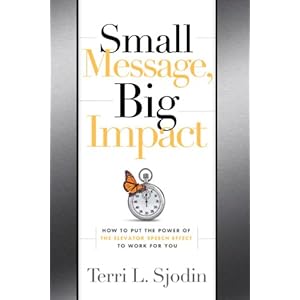This post was originally written for a blog swap run by the Yakezie personal finance blog network to answer the question “What motivates you to be financially responsible?“
This may not be the most original motivation, but I am financially motivated by my family. Before I had kids, I didn’t care much about money or “stuff”. My goal was to sell everything I owned and backpack Europe. Yeah, it’s a bit cliché, but that’s the way it is. I was also considering trying to live out of saddlebags while touring the country 1000 CCs at a time.
Now, I’ve got so many other considerations. Four, to be exact. A wife and three kids certainly change your perspective. If it doesn’t, you’ve got flaws that I can’t help you with.
When my family started, it was a huge wake-up call. Suddenly, I had responsibilities (cue scary music). Overnight, I had things to care about that didn’t involve a party, or instant gratification, or, well, me. Merlin the Stork floated down, waved a wand and Poof! I was a grown-up. This may not sound like much of a shock, but my wife and I had baby #1 when we were 20. Adulthood was still pretty new to us, and suddenly we’re parents?
As a grown-up, with three precious little monsters dependent on me for absolutely everything, I had to start worrying about their security. This was more than just keeping them physically safe. I’ve had to manage their emotional health, their physical needs, and their entertainment. They rely on me (and my wife!) for everything. How could I live with myself if I couldn’t put food on the table and a roof over their heads? Winter boots? Clothes without holes? Visits to the doctor? Have you ever noticed how much kids cost, even without considering the Japanese fad games and Barbie dreamhouses? Having a kid is like cutting a hole in your wallet and holding it over a blender nestled comfortably in a roaring fire fueled by napalm.
Then, after I’ve got them clothed, fed, sheltered, and entertained, I have to teach them how to be real people. I’m of the opinion that children in their natural state are little more than wild animals. Generally cuter, but that’s about it. It’s a parent’s job to train that ravenous little beast into an acceptable, successful person. Part of that consists of teaching the little brats how to start paying for their own clothes, food, shelter, and entertainment, and how to manage that without becoming a drain on society. Productivity and success can be defined a thousand different ways, but none of them include letting other people pay your way or borrowing money you have no intention or means of repaying. Ultimately, being an adult–being a successful part of society–involves recognizing your responsibilities and living up to them.
Caring for, providing for, and teaching my children the things I know provides me with an irreplaceable opportunity to watch them grow and learn, while giving me a chance to steer that growth. It is, without a doubt, the best, most satisfying, and most difficult thing I have ever done. The pleasure I get from raising my kids reinforces my desire to become the best person I can be.
Really, I just want to be the guy my kids think I am.








